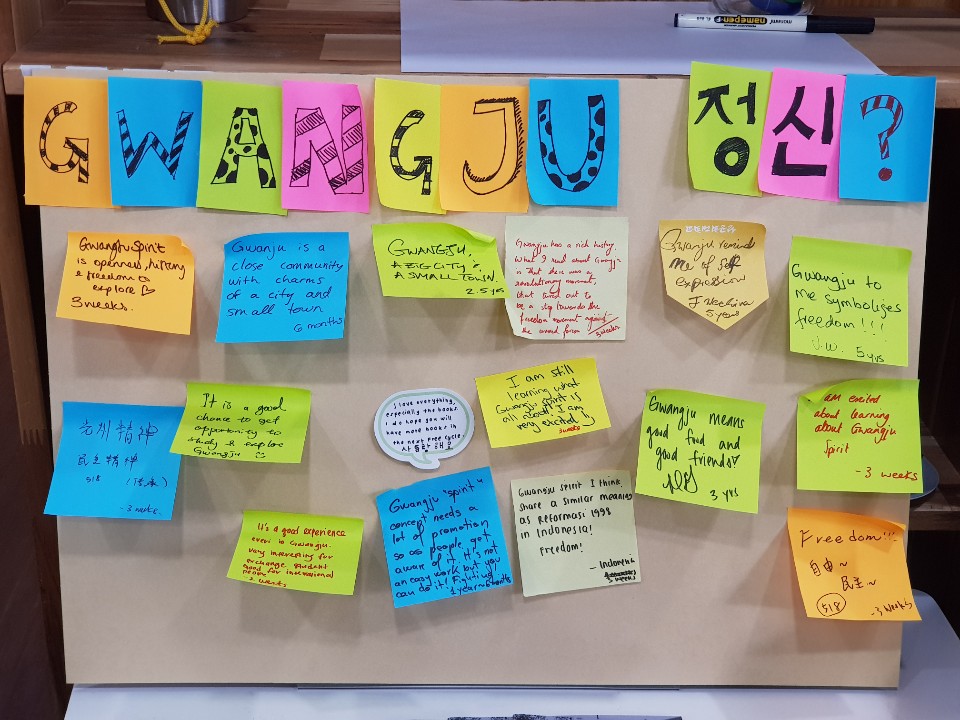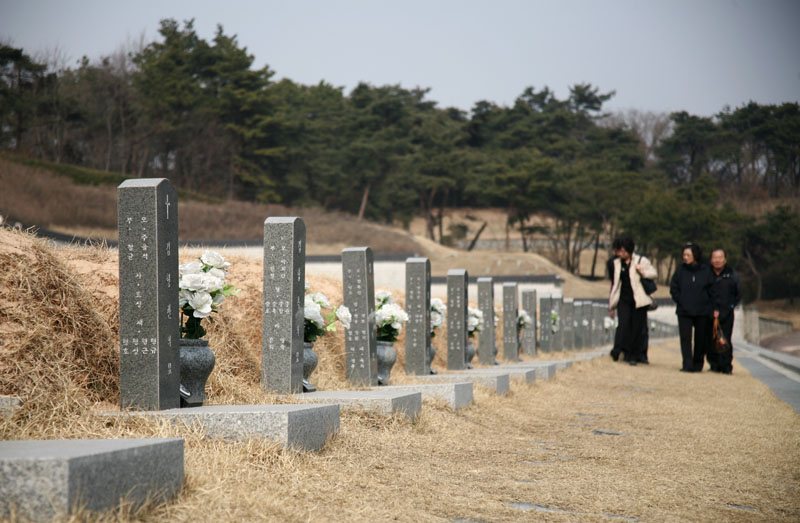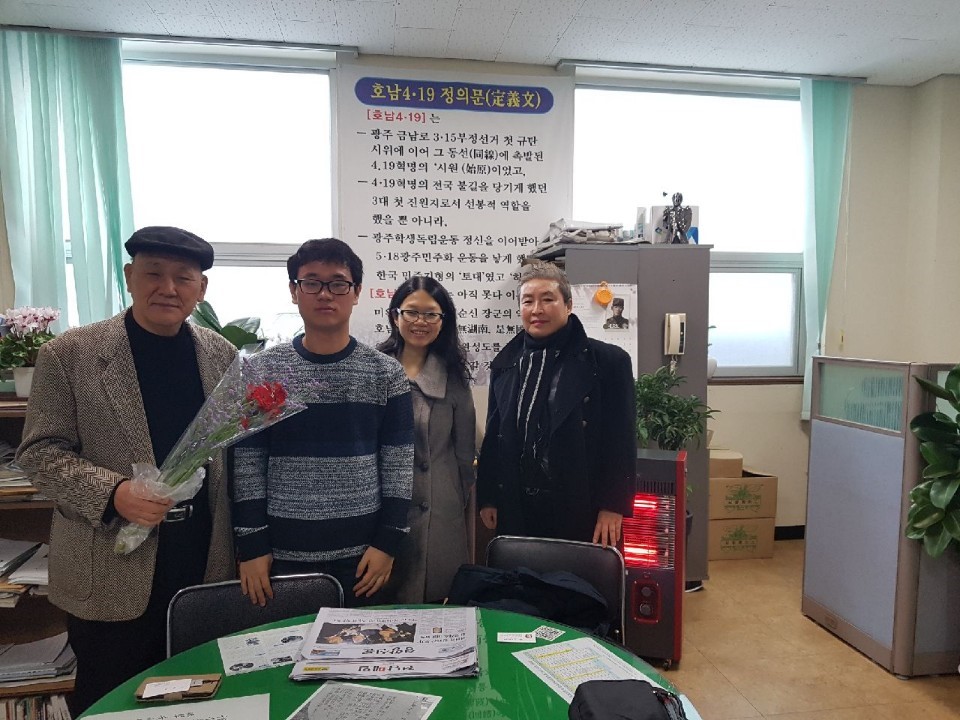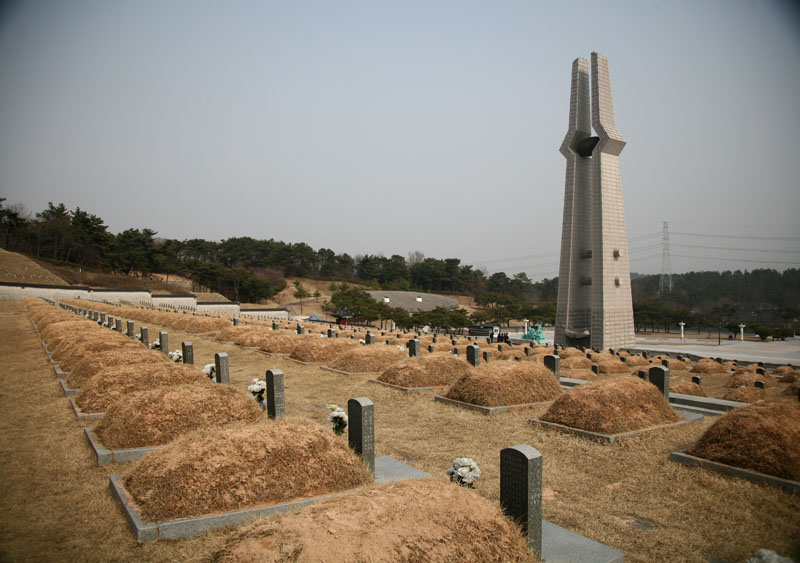In Search of the Gwangju Spirit
Written by Lee Suk Pei
The Project: Gwangju Dark Tour
After completing our very first project on the Goryeo-in Village in the Gwangsan District, for our second project our team decided to focus on the dark histories of Gwangju’s past. The new project, a walking tour, will cover a range of incidents, including the 3.1 Independence Movement, the 4.19 Revolution, the 5.18 Democratic Uprising, the 11.3 Student Movement, and others to show how these incidents unfolded and shaped the Gwangju we live in today. In the process, we would also like to understand how the spirit of Gwangju developed by asking questions such as “What makes the Gwangju spirit uniquely Gwangju’s?” “Why is this spirit so pronounced in this region relative to others?” and “What is this spirit’s effect on people’s participation in all these movements?”
Through this project, we would like to highlight the importance of several values, including the freedom of expression, the freedom of thought, the protection of human rights, and the communal spirit. In doing so, we hope to argue that it is the spirit of Gwangju, particular to this region, that drives people out onto the street to fight for these intangible yet essential values.

The Spirit of Gwangju
Throughout the year, apart from the dates of different flower and other festivals held around the country, the calendar is dotted with dates commemorating the nation’s past: 3.1, 4.19, 5.18, 6.10, 6.25, and so on. On March 1, we observed the 100th anniversary celebration of the 3.1 Independence Movement against Japanese colonialization, which dates back to 1919. Looking back at photos of people chanting “Manse! Manse!” (만세, 만세; Long live [Korea]!) with great spirit, I recently started to wonder what kind of spirit gave Koreans a level of patriotism strengthening to where they did not bat an eye when fighting for independence, even when they were faced with the guns and rifles of the Japanese. Were they not afraid of death? Did they not care about the consequences? The cooperation and community spirit observed among them were strong enough that they would protect each other – even if that meant great danger – and provide food and daily necessities for each other. I am not sure about other areas of Korea, but the one thing that the people of Gwangju always talk about is the “spirit of Gwangju.”
The Lesser-Known Darkness: The 4.19 Struggle in Gwangju
In the process of learning about this nationwide movement that toppled the government in 1960, our team visited the 4.19 Memorial Hall located in Gyerim-dong. We saw that the memorial hall was well equipped but that the amount of visitors was nevertheless quite low. The pamphlets were also well made, though they did not come in English or in any language other than Korean. This seemed like a missed opportunity for helping people understand such an important struggle in Korea’s history. Interestingly, our interview with the head of the memorial hall revealed that the protest actually arose around three hours earlier in Gwangju when compared to other places in Korea. But without Korean language skills, this important tidbit would remain unknown to many visitors. Furthermore, if one were to take the time to search for relevant information online on how the struggle unfolded in Gwangju, I could almost guarantee that you would not find much. So we decided to do our own research…
The Better-Known Darkness: The 5.18 Uprising in Gwangju
One incident that needs no introduction would be the May 18 Gwangju Democratic Uprising that took place in 1980. This year will mark the 39th anniversary of the incident, and I believe there will be many activities organized to commemorate its 40th anniversary in 2020. Given all the evidence that exists confirming the true nature of this democratic uprising, one would think that recognition of the event would be a non-issue; however, the recent case of some conservative members of the Assembly labeling participants of the uprising “monsters” is shocking. Their comments indicate that some segments of society have not changed much compared to 39 years ago. Even with popular films showing realistic accounts of how the people of Gwangju participated in the uprising, there are still people on the other side who attempt to deride their efforts and diminish their spirit.

Jong-hwan’s Take on the Project
As the project is a group effort, it would not be fair if only one voice were presented. Hence, I decided to invite our fellow members to give their take on the project. One of our project members, Jong-hwan, is currently studying geography at Chonnam National University. According to him, being in the project allows him to hone his geographical skills. He said, “I want to understand Gwangju, the place I’m staying in, and to make this happen for people who are interested in the story of Gwangju. We want to reveal the sense of community and the spirit of Gwangju.” He also added that participants in the walking tour of Gwangju’s dark days will be able to learn how the liberties and rights we are enjoying in 2019 could be better safeguarded. Participants will also be able to appreciate the people who entrusted these important values to us so that we can prevent these values from eroding.

Hyun-seok’s Take on the Project
Hyun-seok’s participation in the project has provided valuable input due to her being a Gwangju citizen herself. She shared her story about how, while she was an elementary school student, she witnessed some of these May 18 incidents happening right across from her house. She always mentions that it is important that our project highlights the spirit of Gwangju and that, without this spirit unique to the people here, these struggles would not have happened. As an artist herself, she also added that the unique historical background and economic situation of the people here have contributed much to the artistic impulses of this region, the birthplace of a traditional form of Korean narrative singing called chang (창).
People who are interested in knowing more about the project are welcome to visit our Facebook page at https://www.facebook.com/GwangjuINMUN/ or simply search Facebook for “GwangjuINMUN.”
Gwangju Dark Tour
Date: April 27, 2019
Time: 10:30 a.m.
Duration: 3 hours (Tour starts from 4.19 Memorial Hall
to 5.18 Democratic Plaza.)
Venue: The 4.19 Memorial Hall
Fee: 4,000 won
The Author
Suk Pei is currently studying for her master’s degree at Chonnam National University. Having been in Gwangju for almost one year, she is starting to extend her tentacles to meet different people and participate in various activities here in Gwangju. Gwangju is definitely more than what meets the eye.




